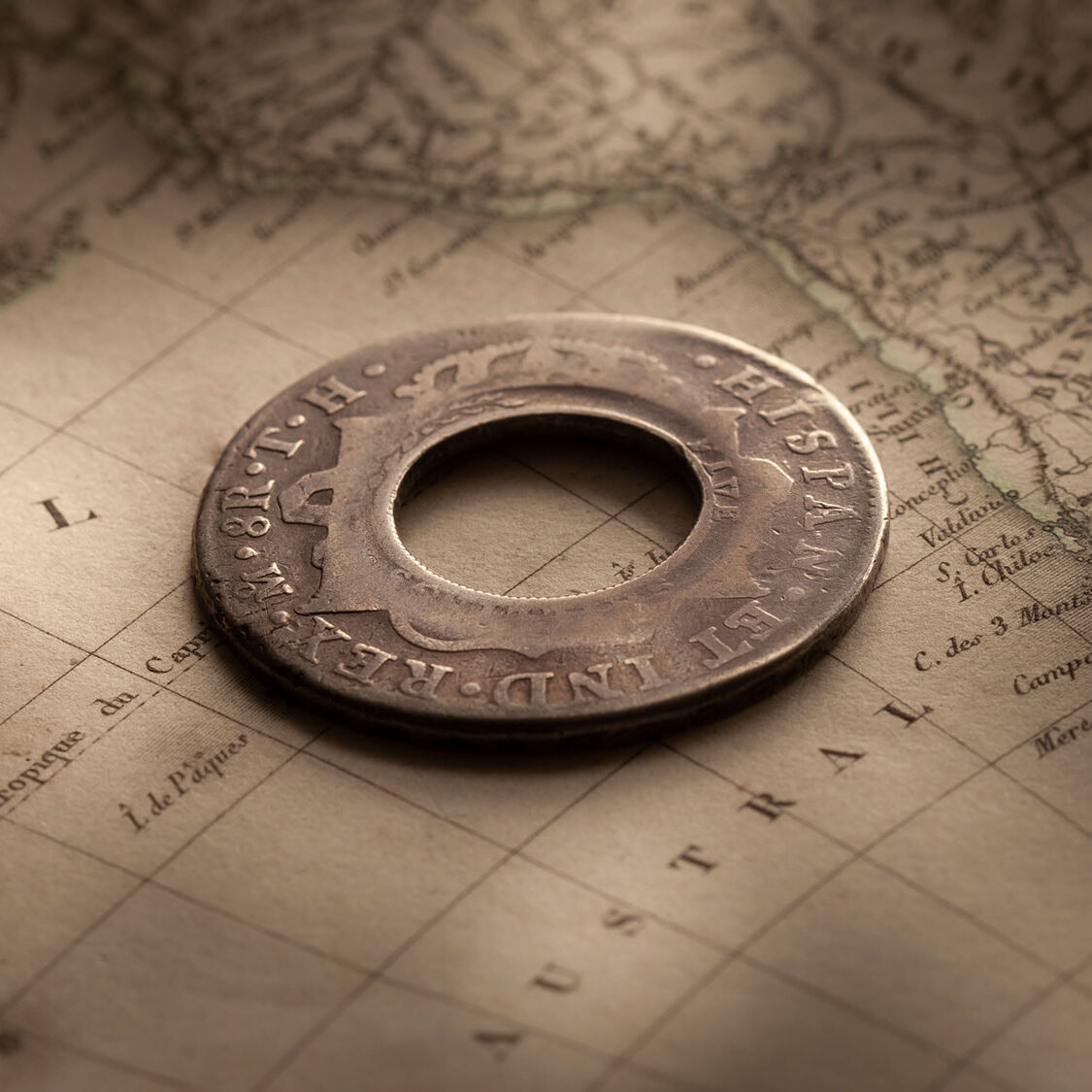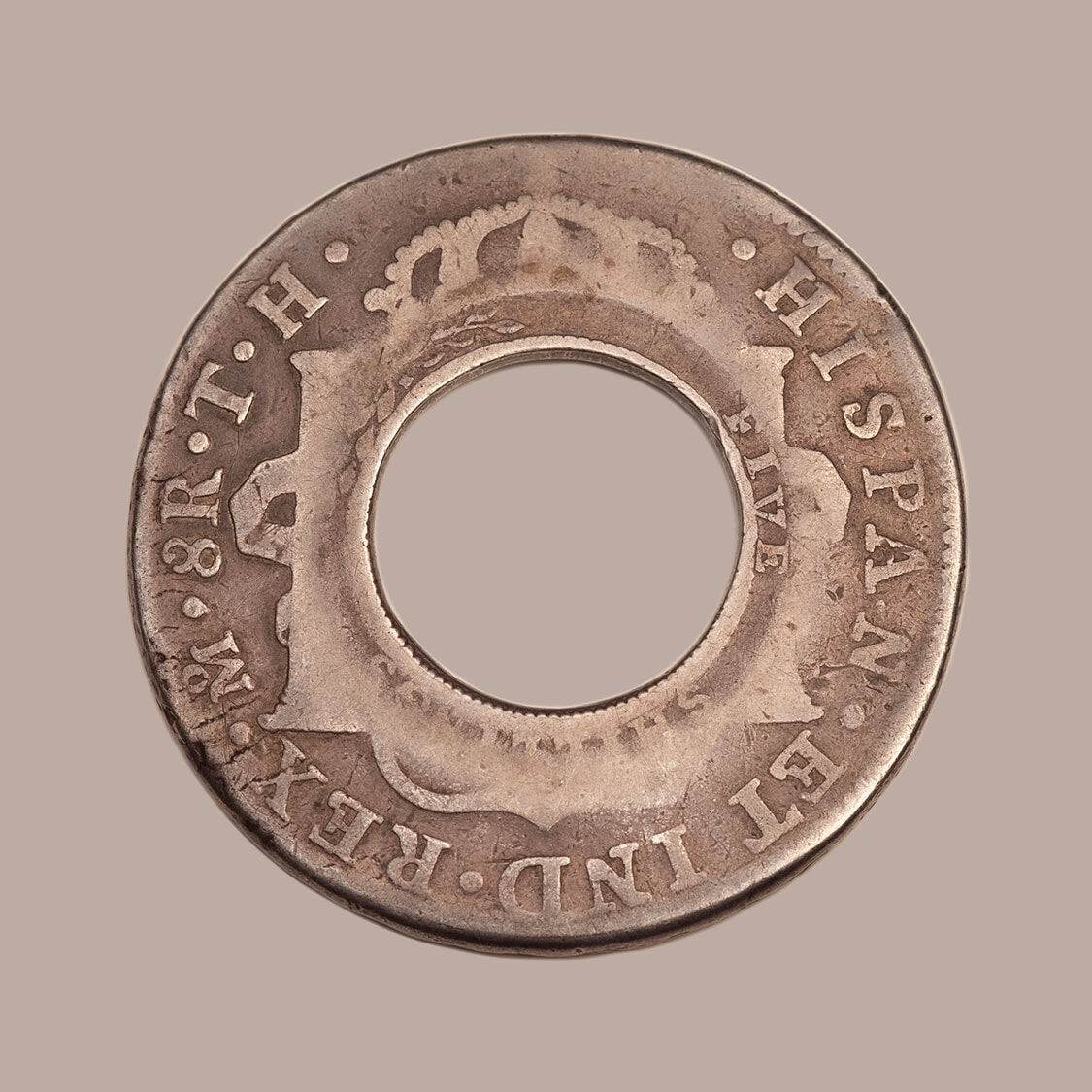1813 Holey Dollar created from a Charles IV Spanish Silver Dollar that was struck at the Mexico Mint in 1805


The fundamentals of this Holey Dollar.
When Mint Master William Henshall created this Holey Dollar, he grabbed a Spanish Silver Dollar that had been struck at the Mexico Mint in 1805. The dollar depicted the legend and portrait of King Charles IV.
The coin was one of 40,000 Spanish Silver Dollars imported by Lachlan Macquarie to use as the basis of the colony's first currency.
Armed with a punch, Henshall cut a hole in the dollar. He then placed the holed coin into a simple drop hammer system which held two dies.
One die contained the elements ‘New South Wales’ and ‘1813’. The other die contained the denomination of ‘Five Shillings’, a double twig of leaves and an ‘H’ discretely placed at the juncture of the twigs, Henshall determined to leave his mark. The design elements on the two dies are known as the counter-stamps. Using gravitational force, the design elements of the dies were stamped onto both sides of the holed silver dollar around the inner circular edge of the hole.
And it is at this point – and this point only – that the ‘holed’ silver dollar became the 1813 New South Wales Five Shillings. Better known as the 1813 Holey Dollar.

The original silver dollar, from which this coin was struck, had undergone extensive circulation before William Henshall got his hands on it. What is amazing is that the coin has not sustained any detracting damage during its time in circulation. The fields are glossy, toned to a handsome gun metal grey. The counter stamps "New South Wales' and 1813 are distinct and clear.

The Mexico Mint mark 'M' and a circle above it, shown clearly in the legend. Again we comment that there is no detracting damage from its time in circulation. The fields are glossy, toned to a handsome gun metal grey. The counter stamps "Five Shillings" are legible.
© Copyright: Coinworks
